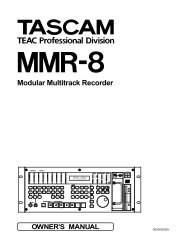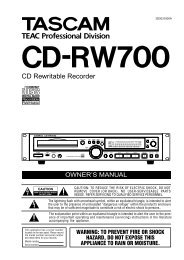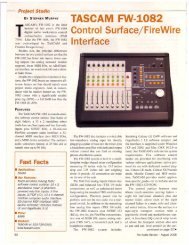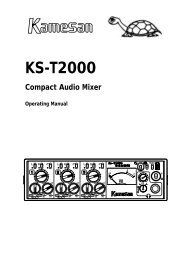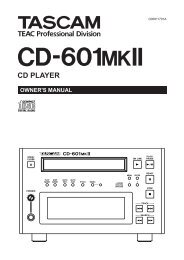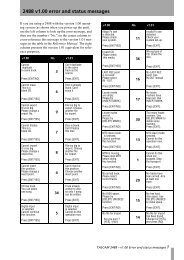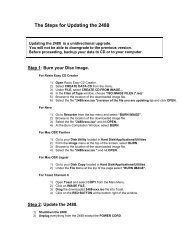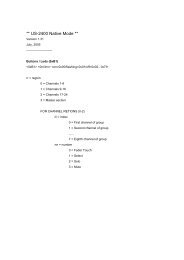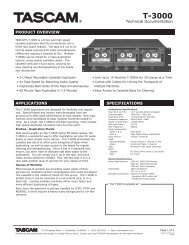GigaStudio 3 Installation and Use: QuickStart Guide - 4.37 - Tascam
GigaStudio 3 Installation and Use: QuickStart Guide - 4.37 - Tascam
GigaStudio 3 Installation and Use: QuickStart Guide - 4.37 - Tascam
Create successful ePaper yourself
Turn your PDF publications into a flip-book with our unique Google optimized e-Paper software.
Meet QuickEdit ÿ page 17<br />
Although this is a <strong>QuickStart</strong> <strong>and</strong> not a course on synthesis, if<br />
you’re into synthesizers <strong>and</strong> are familiar with typical synthesizer<br />
modules, feel free to play around. Envelope 1 controls the<br />
amplitude, Envelope 2 controls the fi lter. If you’re clueless about<br />
synthesizers, select Lowpass as the Filter Type, <strong>and</strong> vary the<br />
fi lter’s Cut(off) Freq(uency) <strong>and</strong> Res(onance) parameters as you<br />
play. You’ll hear the timbre change. Now add some Attack time<br />
with Envelope 1; the piano note swell up to volume rather than<br />
have a percussive attack, <strong>and</strong> you’ll probably see the attack curve<br />
superimposed on the waveform. Similarly, Envelope 2’s Attack<br />
control changes the fi lter’s cutoff frequency.<br />
And how about a piano with vibrato? Sure, why not — go to<br />
the LFO section <strong>and</strong> increase the Pitch Int Depth parameter value<br />
to about 40.<br />
This gives you only the slightest idea of the power of<br />
QuickEdit. While it defaults to editing all samples used in an<br />
instrument, it’s also possible to edit each sample that makes up<br />
the instrument individually. For example, if your instrument is a<br />
drum hit, each drum can have its own fi ltering, envelopes, etc.<br />
LOADING INSTRUMENTS<br />
17



